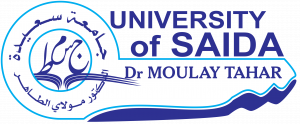
Plagiarism
Plagiarism is presenting someone else’s work or ideas as your own, with or without their consent, by incorporating it into your work without full acknowledgement. All published and unpublished material, whether in manuscript, printed or electronic form, is covered under this definition. Plagiarism may be intentional or reckless, or unintentional. Under the regulations for examinations, intentional or reckless plagiarism is a disciplinary offence. In any case, it has no place in your academic work: learn to cite correctly your sources; your work will be valued.
Targeted Public: 2nd Year L.
1. Objectives of plagiarism:
Upon completion, you should be able to do the following:
Know the definition of plagiarism as well as the different types.
Know the importance of properly citing so that you can avoid plagiarizing.
Understand the penalties if you plagiarize.
2. Prerequisite Learning: in order to effectively master the objectives listed above, students must exhibit mastery in the following areas…
Students should be given examples of what might be considered “common knowledge” to avoid plagiarism. Examples are attached with this lesson.
3. Goals: The goal of this lesson is to make students aware of the importance of citing sources properly specifically when using the internet. They will become aware of the legal implications and possible consequences of plagiarizing.
- Enseignant: Djamel Nouali
